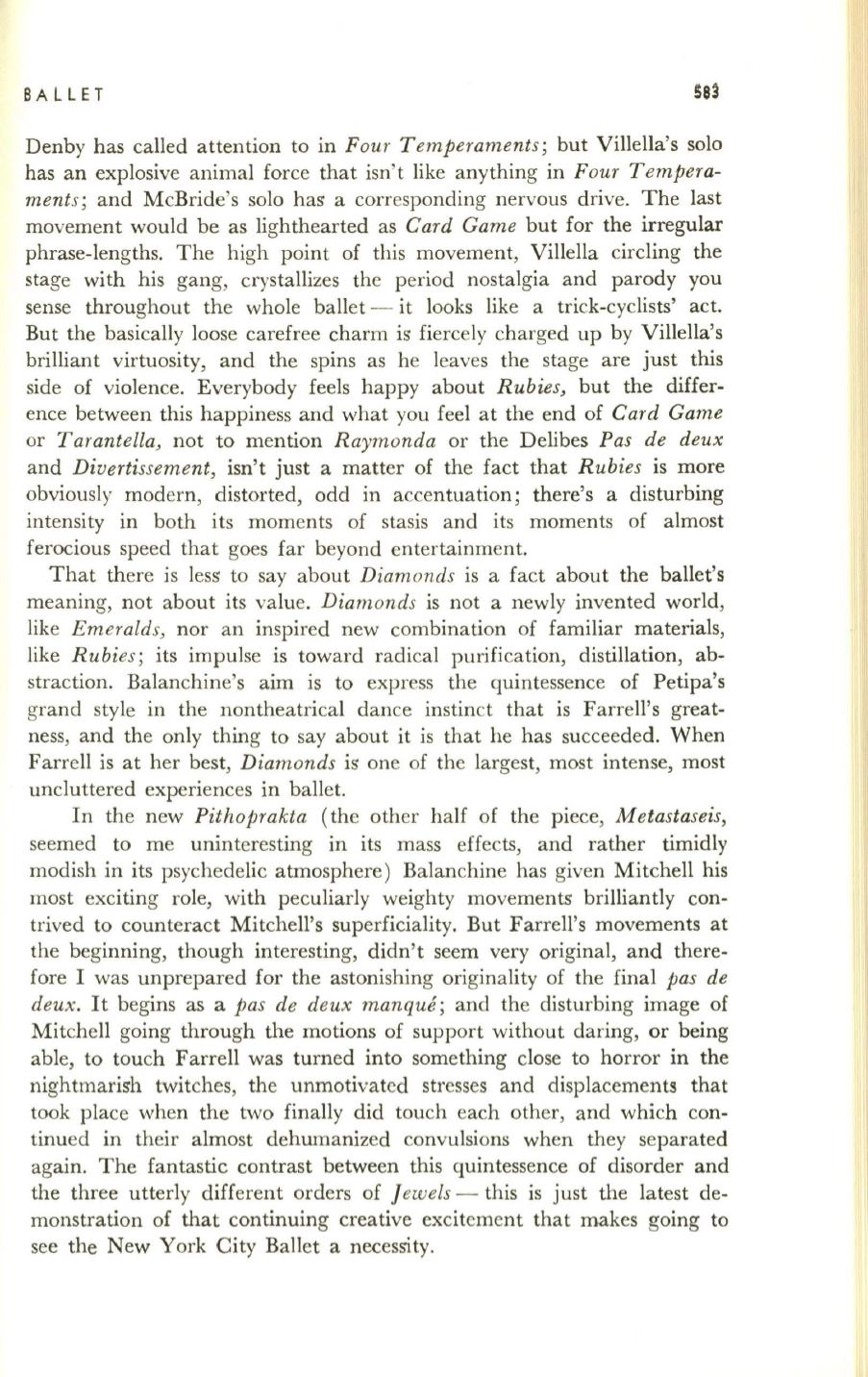
BALLET
Denby has called attention to in
Four Temperaments;
but Villella's solo
has an explosive animal force that isn't like anything in
Four T empera–
ments;
and McBride's solo has a corresponding nervous drive. The last
movement would be as lighthearted as
Card Game
but for the irregular
phrase-lengths. The high point of this movement, Villella circling the
stage with his gang, crystallizes the period nostalgia and parody you
sense throughout the whole ballet - it looks like a trick-cyclists' act.
But the basically loose carefree charm is fiercely charged up by Villella's
brilliant virtuosity, and the spins as he leaves the stage are just this
side of violence. Everybody feels happy about
Rubies,
but the differ–
ence between this happiness and what you feel at the end of
Card Game
or
Tarantella,
not to mention
Raymonda
or the Delibes
Pas de deux
and
Divertissement,
isn't just a matter of the fact that
Rubies
is more
obviously modern, distorted, odd in accentuation; there's a disturbing
intensity in both its moments of stasis and its moments of almost
ferocious speed that goes far beyond entertainment.
That there is less to say about
Diamonds
is a fact about the ballet's
meaning, not about its value.
Diamonds
is not a newly invented world,
like
Emeralds,
nor an inspired new combination of familiar materials,
like
Rubies;
its impulse is toward radical purification, distillation, ab–
straction. Balanchine's aim is to express the quintessence of Petipa's
grand style in the nontheatrical dance instinct that is Farrell's great–
ness, and the only thing to say about it is that he has succeeded. When
Farrell is at her best,
Diamonds
is one of the largest, most intense, most
uncluttered experiences in ballet.
In the new
Pithoprakta
(the other half of the piece,
Metastaseis,
seemed to me uninteresting in its mass effects, and rather timidly
modish in its psychedelic atmosphere ) Balanchine has given Mitchell his
most exciting role, with peculiarly weighty movements brilliantly con–
trived to counteract Mitchell's superficiality. But Farrell's movements at
the beginning, though interesting, didn't seem very original, and there–
fore I was unprepared for the astonishing originality of the final
pas de
deux.
It begins as a
pas de deux manque;
and the disturbing image of
Mitchell going through the motions of support without daring, or being
able, to touch Farrell was turned into something close to horror in the
nightmarish twitches, the unmotivated stresses and displacements that
took place when the two finally did touch each other, and which con–
tinued in their almost dehumanized convulsions when they separated
again. The fantastic contrast between this quintessence of disorder and
the three utterly different orders of
Jewels
-
this is just the latest de–
monstration of that continuing creative excitement that makes going to
see the New York City Ballet a necessity.


